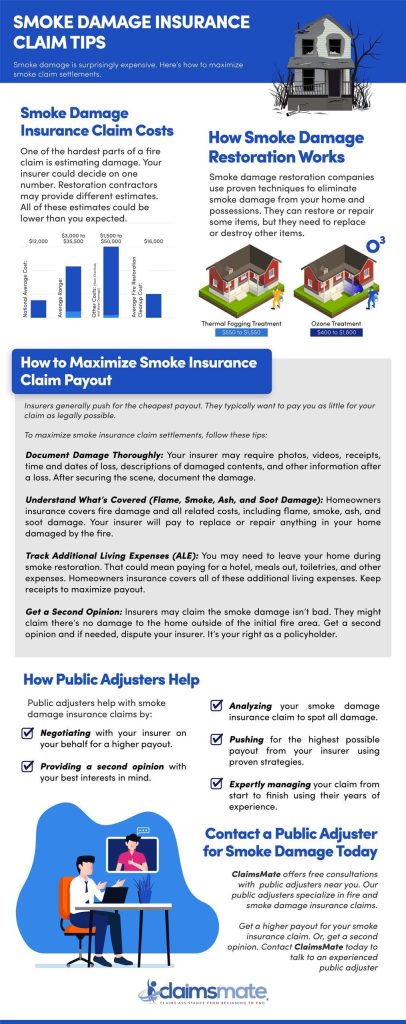When it comes to protecting your home or business, understanding fire and smoke damage coverage is more important than ever. Fires can cause unexpected devastation, but the right insurance coverage can turn a tough situation into a manageable one. In this article, we’ll break down everything you need to know about fire and smoke damage coverage—helping you feel confident and prepared, no matter what happens. Whether you’re a homeowner or a business owner, read on to discover how to safeguard your property and breathe easier knowing you’ve got the right protection in place.
Table of Contents
- Understanding the Scope of Fire and Smoke Damage Coverage
- Key Steps to Take Immediately After Fire and Smoke Damage
- How to Maximize Your Insurance Claim for Fire and Smoke Damage
- Expert Tips for Preventing Future Fire and Smoke Damage
- To Wrap It Up
Understanding the Scope of Fire and Smoke Damage Coverage
When it comes to fire and smoke damage, it’s crucial to understand precisely what your insurance policy covers. Most standard homeowners insurance policies provide protection not only for the physical destruction caused by flames but also for smoke infiltration. This means you might be covered for repairs to your home’s structure, as well as the cleaning or replacement of personal belongings affected by smoke odor and soot. However, it’s important to recognize that coverage limits and specific exclusions vary between policies. For example, damage caused by soot inside air ducts or smoke lingering for months may require additional endorsements or riders in your policy.
Here’s what you should typically expect under fire and smoke damage coverage:
- Structural repairs: Restoration of walls, roofs, flooring, and other fire-damaged elements.
- Content replacement or repair: Personal items damaged by smoke, soot, or heat-related effects.
- Professional cleaning: Removal of smoke odor and soot residues from furniture, textiles, and ventilation systems.
- Additional living expenses: Costs if you need to temporarily relocate while your home is being restored.
By knowing the breadth of coverage available, homeowners can take proactive steps to ensure their policy aligns with their needs, providing peace of mind in the face of unpredictable disasters.
Key Steps to Take Immediately After Fire and Smoke Damage
Immediately after experiencing fire and smoke damage, safety should be your top priority. Ensure that everyone is out of harm’s way and avoid re-entering the property until authorities declare it safe. Once cleared, document the damage thoroughly with photos or videos—this visual record will be invaluable when communicating with your insurance provider. Next, contact your insurance company promptly to report the incident and begin the claims process. Remember to keep receipts for any emergency repairs or temporary accommodations; these expenses can often be reimbursed.
As you navigate the aftermath, focus on preventing further damage. Ventilate the area by opening windows to help clear lingering smoke, and consider using air purifiers if possible. Avoid cleaning soot or ash yourself, as improper attempts can permanently damage your belongings. Instead, hire professional restoration experts who can evaluate the extent of the damage and execute safe, effective cleanup and repairs. Taking these immediate steps not only protects your property but also strengthens your claim, setting you on the path to a smooth recovery.
- Ensure safety and avoid re-entry until cleared
- Document all visible damage with photos and videos
- Contact your insurance provider without delay
- Keep receipts for any emergency-related expenses
- Ventilate your home to reduce smoke odor
- Consult professional damage restoration services
How to Maximize Your Insurance Claim for Fire and Smoke Damage
After experiencing fire and smoke damage, taking immediate and organized action is crucial to ensure your insurance claim reaches its full potential. Start by documenting every visible damage—from structural impairments to smoke odors and soot deposits. Use clear photos and videos, and keep detailed notes of all affected areas and belongings. Contact your insurance company quickly and provide them with this evidence upfront to demonstrate the extent of your loss. Remember, prompt communication underscores your commitment to resolving your claim efficiently.
Next, make sure to preserve damaged items as insurers often require proof of loss through the original belongings. Avoid disposing of anything until you have explicit approval from your adjuster. Additionally, obtain professional estimates for repairs and cleanup services, as these help validate your claim’s costs. Keeping track of all related expenses—like temporary housing, meals, and additional living costs—can also significantly boost your reimbursement eligibility. By staying organized and proactive, you pave the way to a smoother, more successful claims process.
- Document thoroughly: Photos, videos, and written accounts.
- Notify your insurer immediately: Time-sensitive claims get priority.
- Preserve evidence: Keep damaged items until cleared.
- Get repair estimates: Professional quotes strengthen your case.
- Track additional living expenses: They’re often covered.
Expert Tips for Preventing Future Fire and Smoke Damage
Protecting your home from the devastating effects of fire and smoke starts with smart, proactive choices. Begin by installing smoke detectors on every floor and testing them monthly to ensure they’re working properly. Keep fire extinguishers readily accessible in key areas such as the kitchen and garage, and educate everyone in your household on how to use them effectively. Additionally, maintaining electrical systems by hiring a professional for regular inspections can prevent dangerous short circuits, which are a common cause of house fires.
Beyond these basics, consider adopting advanced safety measures like fire-resistant building materials and creating clear evacuation plans tailored to your home’s layout. Regularly cleaning and servicing heating vents, chimneys, and dryer ducts can significantly reduce ignition risks. Don’t forget the power of landscaping—keeping bushes and trees trimmed and away from the house forms a natural barrier. Prioritizing these steps helps not only in minimizing damage but also in making your home a safer haven for years to come.
To Wrap It Up
Fire and smoke damage can be overwhelming, but understanding your coverage is the first step toward peace of mind and recovery. With the right information and a proactive approach, you can protect your home and belongings from unexpected setbacks. Remember, being informed means you’re better equipped to navigate the claims process and rebuild stronger than before. Stay prepared, stay positive, and know that with the right coverage, brighter days are ahead!





